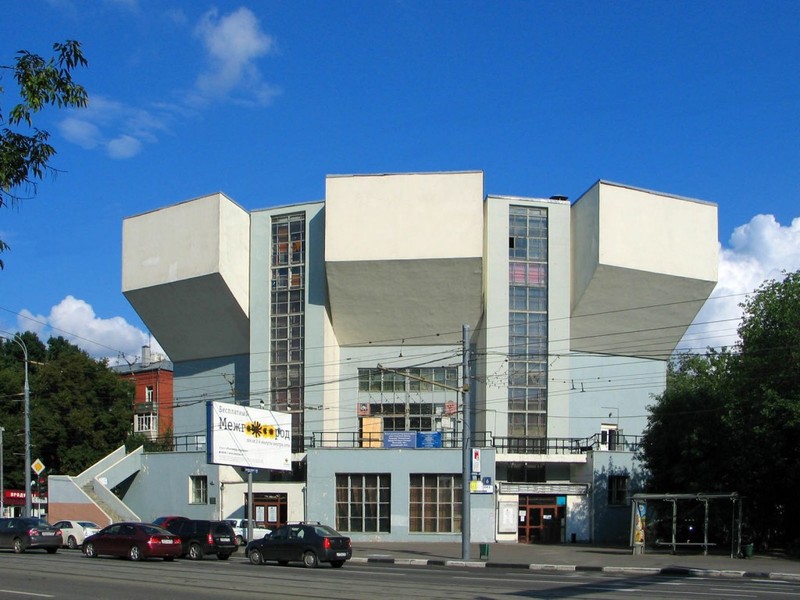The Final Stop: Rusakov Workers' Club
Welcome to the Rusakov Workers’ Club, designed by the famous Konstantin Melnikov. Constructed in 1927, the club functions much like the Zuev club. The space provided an auditorium, theater, and office rooms for individuals to socialize and gather, and was also made of the modern, new materials of concrete and glass.
Similar to Golosov, Melnikov shows an interest in dramatic form, in order to evince emotion from the outside of the building much in ASNOVA style. The Rusakov Workers’ Club was designed for the defiant expression of Russian political power and dominance. The form was meant to be monumental and triumphant, and used not only to flaunt Russian power, but also to inspire the workers who frequent the club. With its exaggerated sharp edges and concrete forms jutting defiantly outward, it was intended to evince muscular sentiments of strength and boldness.
This construction of workers’ clubs was done for the purpose of spreading propaganda by flaunting Russia’s good treatment of the common worker, and for providing educational and communal centers. They also acted as a bridge between the old and new world, as they tried to unite typically isolated populations into one center, in order to create a community out of the burgeoning population in the city. These Constructivist workers’ clubs were in unison with the greater Constructivist goal of providing for a better Soviet, communist society, with modern facilities and amenities. The Rusakov Workers' club, with its bold concrete shapes and structure and complete with modern amenities, showcased a new, modern, powerful Russia that could provide for its people, and compete with its western counterparts. Additionally, the space articulated the greater Russian and Constructivist goal of providing for a more communal and harmonious worker-dominated society.
Specifically, ASNOVA Constructivism through projects like the Rusakov Workers’ Club targeted individuals’ emotions. Both Golosov’s and Melnikov’s ASNOVA styled workers’ clubs had external appearances that could target the psychological level of the masses. It was believed that architecture had to saturate these masses in order to achieve the desired emotional effect of those using and viewing these structures, specifically in this case awe and admiration for the amenities of the Russian state and political power.
The building also still stands today, and has been actively renovated to return to its status as a community and theater center for the neigborhood. While its form and structure maybe outdated, its functionality as a community center at the time of its opening is now the same as its function today. Though in different context, then for providing communal spaces in an effort to create a utopian communist society, now for providing a place of casual leisure, the site's ultimate purpose has not been compromised, and it provides a historical connection between the Moscow of the 20th century, and the Moscow of today.
Garnham, Trevor. Architecture Re-assembled: The Use (and Abuse) of History. N.p.: Routledge, 2013. Print. P 109.

